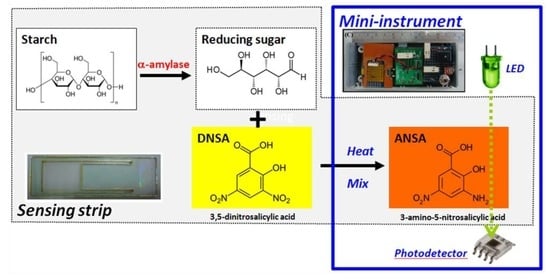Hand-held Colorimetry Sensor Platform for Determining Salivary α-Amylase Activity and Its Applications for Stress Assessment
Abstract
Share and Cite
Hsiao, H.-Y.; Chen, R.L.C.; Chou, C.-C.; Cheng, T.-J. Hand-held Colorimetry Sensor Platform for Determining Salivary α-Amylase Activity and Its Applications for Stress Assessment. Sensors 2019, 19, 1571. https://doi.org/10.3390/s19071571
Hsiao H-Y, Chen RLC, Chou C-C, Cheng T-J. Hand-held Colorimetry Sensor Platform for Determining Salivary α-Amylase Activity and Its Applications for Stress Assessment. Sensors. 2019; 19(7):1571. https://doi.org/10.3390/s19071571
Chicago/Turabian StyleHsiao, Hsien-Yi, Richie L. C. Chen, Chih-Chi Chou, and Tzong-Jih Cheng. 2019. "Hand-held Colorimetry Sensor Platform for Determining Salivary α-Amylase Activity and Its Applications for Stress Assessment" Sensors 19, no. 7: 1571. https://doi.org/10.3390/s19071571
APA StyleHsiao, H.-Y., Chen, R. L. C., Chou, C.-C., & Cheng, T.-J. (2019). Hand-held Colorimetry Sensor Platform for Determining Salivary α-Amylase Activity and Its Applications for Stress Assessment. Sensors, 19(7), 1571. https://doi.org/10.3390/s19071571




